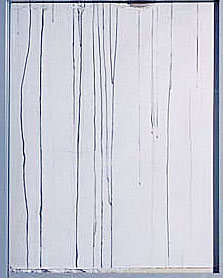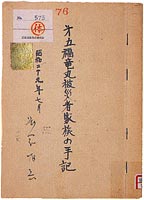
| The Lucky Dragon No. 5 and Hiroshima | ||||
| Damage caused by radiation from the atomic bomb | The Lucky Dragon No. 5 and Hiroshima | |||
| On August 6, 1945, Hiroshima suffered the world's first atomic bombing. The bombing was characterized by its incomparable explosive energy and the emission of radiation that harms living organisms. The Special Exhibition explains the damage caused by radiation from the atomic bomb and the "black rain" that fell after the explosion. | In the A-bombed city of Hiroshima as well, the Lucky Dragon No. 5 incident gave impetus to the movement to ban atomic and hydrogen bombs. The first World Conference Against A- and H- Bombs was held in 1955. The Special Exhibition explains the relationship between the Lucky Dragon No. 5 and Hiroshima and actions to ban atomic and hydrogen bombs.
|
|||
 14/Traces of black rain on a white wall |
 16/Conference Chairman Shinzo Hamai addressing the 1st World Conference Against A- and H- Bombs  17/Diary of family members of the Lucky Dragon No. 5 victims |
|||
 15/Shirt stained by black rain |
||||
| Third Radiation Exposure - The Lucky Dragon No. 5 and Hiroshima Encounter with a hydrogen bomb test Lucky Dragon No. 5 "A-bomb tuna" and radioactive rain Hydrogen test and Japanese scientists Voices opposing A- and H- bombs Damage to the Marshall Islands from nuclear tests Preservation of the Lucky Dragon No. 5 and construction of an exhibition hall The Lucky Dragon No. 5 and Hiroshima Conclusion Tokyo Metropolitan Daigo Fukuryu Maru Exhibition Hall Return to TOP |